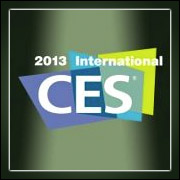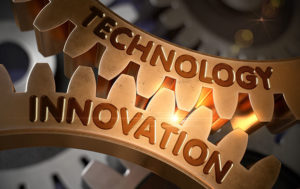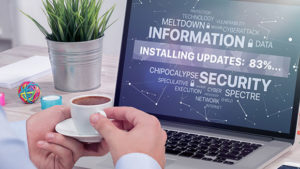
It used to be that the intersection of cars and technology could be found at theannual North American International Auto Show, aka the Detroit Auto Show, which is where the action is this week and next. The show has been known for drawing onlookers to ogle sleek,shiny concept cars with futuristic designs on the outside,and gadgets and applications right out of a Knight Riderepisode on the inside.
This year, however, that car-tech intersection seems to have shifted some 2,000 miles west to Las Vegas, home of last week’s big consumer electronics trade show.
No one expects the king of auto shows to move permanently to Vegas. Yet therewere enough car-related technology products and services announced at CES 2013to make it clear that autos are rapidly becoming computers with wheels.For that transition to become complete, both the auto and technology industries stillhave to negotiate some obstacles.
The Real KITT Car
While nobody is expecting to enjoy the kind of snarky conversations Michael Knighthad with his Knight Rider buddy KITT, the latest voice recognition systems ondisplay in Las Vegas show capabilities for communication between car anddriver that go beyond simple turn-by-turn GPS navigation.
Nuance Communications and Hyundai used CES to announce the development ofnew voice-enabled infotainment systems using the Dragon Drive platform, whichintegrates Nuance’s natural speech technology.
“This could be the big explosion in terms of convergence between technology andthe automobile,” Praveen Chandrasekar, infotainment and telematics programmanager at Frost & Sullivan, told TechNewsWorld. “This is something that is goingto be big.”
The technology includes personalized greetings and updated weather forecastsalong with directions for the driver, who simply voices requests fromthe system.
Smartcar via Smartphone
The cars of tomorrow won’t just have advanced computer systems. They’ll alsotake advantage of something more drivers are already carrying with them: theirsmartphone. This can open the door to a new stage of application development.
“Apps — this is the trend of the industry. Everything is going app-based as OEMssee the advantages to flexibility and upgradability over time,” said Mark C. Boyadjis,senior analyst and manager for infotainment and HMI at IHS Automotive. “In fact,items like navigation, Bluetooth telephony, and even radio functions are now beingtransitioned over to software applications running on — hopefully — a future-proofedhardware platform.”
The true innovations will be in OEMs’ methods for adopting those applications, Boyadjis told TechNewsWorld.
“Just like the connectivity debate, there is more than one way to integrate applications or application content into the car,” he said.
What happens to those on data plans, especially as the mobile phone carriersmove away from unlimited usage and replace them with tiered plans? Could theautomobile become another shared device?
“Ideally, yes — and in theory, it’s a simple process,” Boyadjis added. “The share-everything plans could simply include three smartphones, two iPads and a Toyota.”
Compatibility as a Feature, Not an Option
There could be a collision involving the compatibility of devices andnetworks, though. Going hardware- and network-agnostic may serve a telecommunicationscarrier’s purposes, but it will likely be too expensive to sustain, observed Boyadjis.
“Essentially, the technology exists to allow for any vehicle to connect up to anynetwork — either via MVNO or via a rather costly and yet-unproven hardwareconfiguration,” he explained. “With the MVNO, you will achieve the said purpose,but won’t be able to add the vehicle to a share-everything plan, as it will run througha separate service provider.”
Compatibility is also an issue when one considers that mobile handsets — like cars –are regularly replaced with newer models, making it very difficult for automakers tokeep up. There is also the fact that infotainment technology is essentially mutuallyexclusive not only to brands, but even within models. This creates a challenge whenit comes to creating anything resembling a standard.
“That is the biggest barrier for the automobile industry,” said Dominique Bonte, vicepresident and practice director for navigation, telematics and M2M at ABI Research.
“There are 200 to 300 different car interfaces, and forsoftware developers that could mean 200 to 300 different versions of their product,” he told TechNewsWorld. “That is not a sustainable business model. The consumer doesn’t want to spend timeand energy learning another interface. That is why the industry going forward isgoing to need to develop a common interface. But when that will happen isn’t clear.”
Merging Safety With Technology
Safety was uppermost on theminds of Lexus executives who used their CES press conference to show theircompany’s commitment to easier driving.
“A more skilled driver is a safer driver,” said Mark Templin, Lexus Group vicepresident and general manager. “Our vision is a car equipped with an intelligent,always-attentive copilot whose skills contribute to safer driving.”
Lexus’s research car at CES showed off a system that uses driving sensors poweredby radar, lasers, cameras and GPS.
Audi also brought out a tech-heavy concept car,once that does the driving for you, keeping the auto going forward even if the driverreleases the steering wheel and takes his foot off the gas pedal.
This concept — automated driving — was discussed at CES’ Network Effect ChangesEverything SuperSession panel.
“The technology makes our cars smarter, but also helps ourdrivers be better. We are gradually turning cars into robots,” said Rodney Brooks, founder, chairman and CTO of Rethink Robotics.
However, those concept and research cars are years down the industry highway. The currentperception of technology in cars is that the combination leads to distracted driving.In many parts of the country, it is already illegal to text and drive, or talk on a phoneexcept with a hands-free handset.
“Safety is big. That is one of the biggest concerns for the manufacturers,” said ABI’s Bonte.
“There is fear about bringing that technology to the car — fears of being sued,” he continued. “Some of the manufacturers are limiting the apps that can be used. It isn’t the wild west where any app can be integrated into the car. But there is also legislation against the use of some technology while driving, and that is going to be something to watch going forward.”
The advent of cloud computing and Big Data could ease the transition, with cheaperways of introducing technologies that make cars safer. Systems couldanalyze driving patterns, monitor behaviors and offer predictive environments.
“We could soon see a car that could track your Monday driving habits, your Tuesdayhabits and so on,” Frost & Sullivan’s Chandrasekar said. “It could provide this dynamic service to thedriver. Cloud and big data will become increasingly important, and it will bring thisall together.”





















































